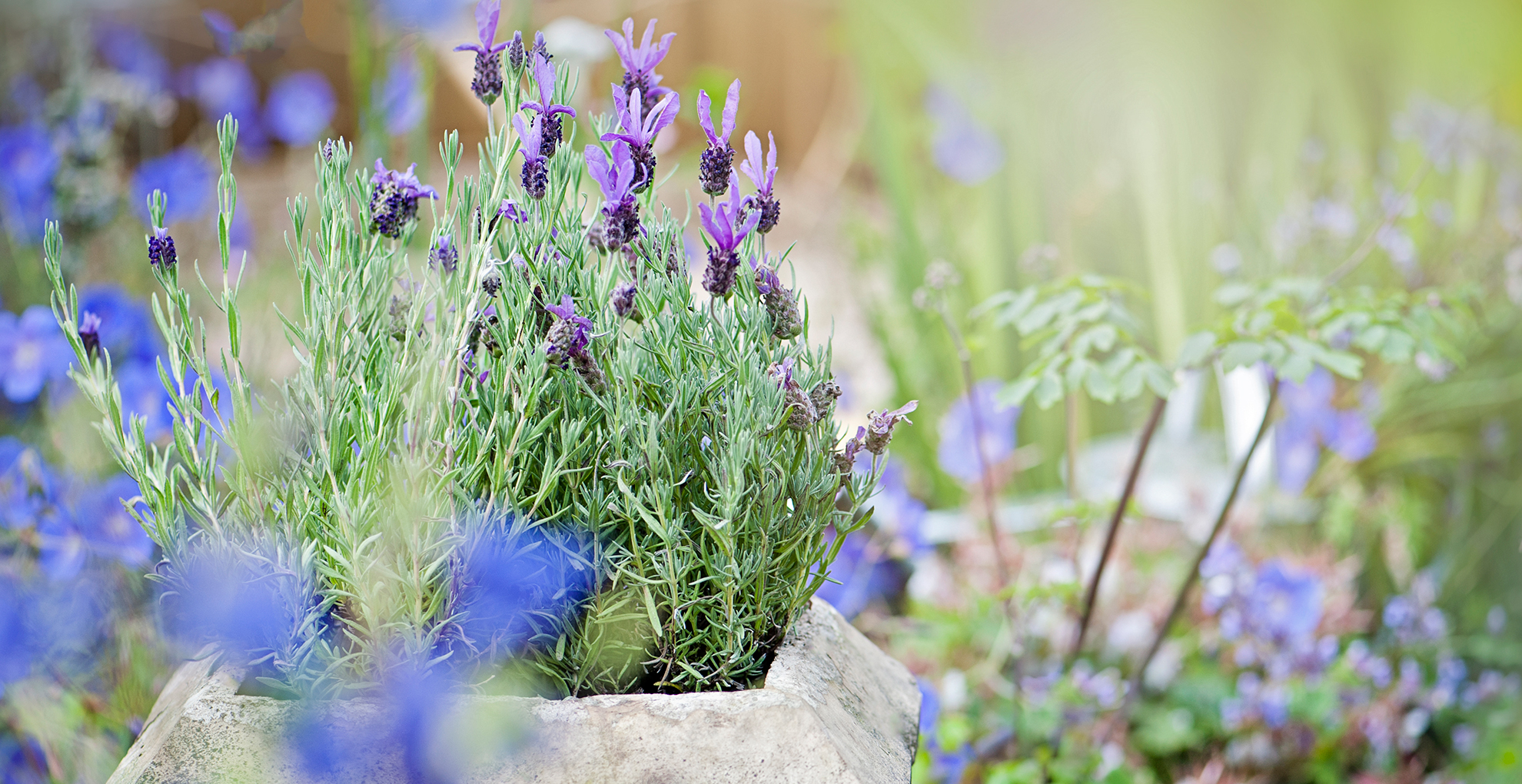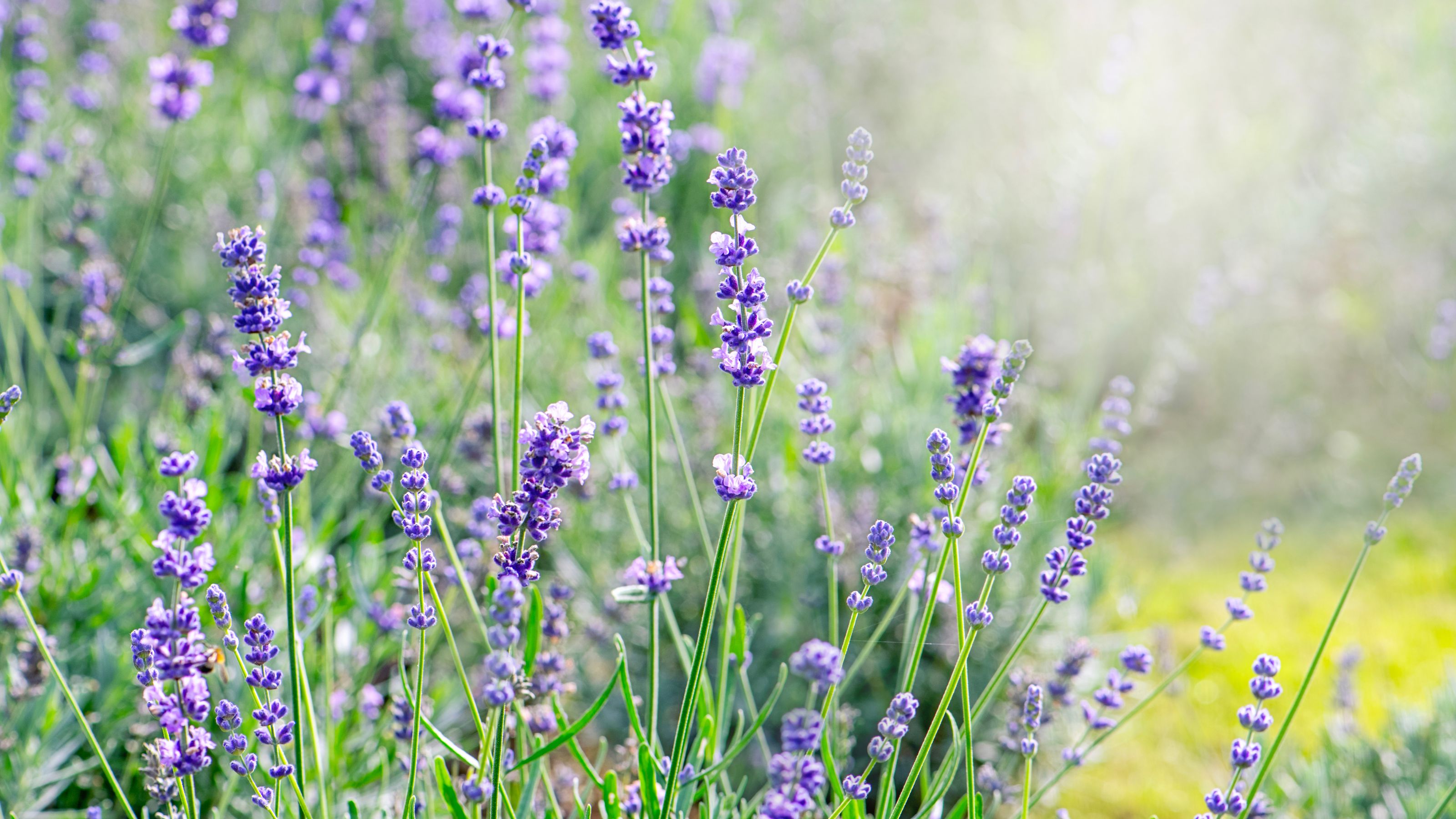How to overwinter lavender so it comes back bigger and better than ever
If you want your lavender to survive the winter, you'll need to follow these expert tips to winterise this fragrant favourite


A lavender-scented breeze is synonymous with serenity, so it's little wonder these aromatic flowers are such a popular choice among gardeners in the UK. Many, however, are unaware that they need to learn how to overwinter lavender if they want them to be at their blooming best.
Why? Well, considering just how many lavender plants we see up and down the country, it's easy to forget that many of these richly perfumed flowers are actually Mediterranean garden staples – which means they're used to warmer, sunnier climes. Therefore overwintering, also known as winterising, is an important aspect of caring for a lavender plant.
So, should we add them to the list of tender plants you need to bring indoors this autumn? That might work for potted plants, true, but it's not going to do the trick if you've got it dug into the borders of your beloved cottage garden.
What to do, then? Follow the advice of the gardening professionals, of course.
How to overwinter lavender
"Overwintering lavender in the UK is generally straightforward, especially for hardier English lavender varieties like Lavandula angustifolia," says Christopher O'Donoghue, one of the co-directors at Gardens Revived.
Whether you've got a hardy English or more tender French/Spanish variety of these alluring plants, then, here’s how to keep it healthy through winter.

A gardener with almost two decades of experience under his belt, Christopher set up Gardens Revived with his brother, Andrew, in 2018 to create a thriving family business. Together, they have worked on residential gardens, listed buildings and gardens, flower shows and large estates with some exceeding 70 acres – many with historical significance.
1. Improve the drainage
Anyone who's ever taken the time to care for a lavender plant will know that they prefer free-draining soil, and this is especially true over the winter months.
Sign up for the woman&home newsletter
Sign up to our free daily email for the latest royal and entertainment news, interesting opinion, expert advice on styling and beauty trends, and no-nonsense guides to the health and wellness questions you want answered.
"Lavender dislikes sitting in wet soil, so it’s essential to ensure it has well-draining soil to prevent root rot," says Christopher.
If your soil is heavy, then, he suggests you consider amending it with gravel or sand, or planting lavender on a slight mound to improve drainage. And remember, too, that compost or well-rotted manure can enhance soil structure and drainage.
2. Essential pruning

One of the best ways to keep these fragrant garden plants happy is to make sure you prune them at the right time of year.
"Lightly prune lavender after flowering in late summer or early autumn to maintain a compact shape. Avoid heavy pruning right before winter, as this can stress the plant," says Christopher.
The Gardener's Friend Secateurs: £9.99 at Amazon
These scissor-like secateurs are ideal for pruning a soft plant like lavender. The ratchet anvil-style shears are made for weak hands to make any pruning job as easy as possible.
3. Protect with mulch
Mulching is one of those gardening terms we hear a lot, but it's vital when it comes to learning how to winterise lavender like a pro.
"Apply a layer of mulch (such as gravel or coarse sand) around the base of the plant to help insulate the roots, but leave a gap around the stem to prevent rot," says Christopher.
You can use wine corks in your garden to make homemade mulch, otherwise, you can buy plenty of organic alternatives
YouGarden 2 x 100L Strulch Mulch Straw Mulch: £26.50 at Amazon
This natural straw mulch is ideal for protecting lavender plants over winter, it's perfect as a natural slug and snail deterrent.
4. Switch up your watering schedule

As mentioned already, lavender doesn't like to sit in boggy ground. If you want to overwinter lavender like a pro, then, be sure to switch up your watering schedule with the seasons.
"Lavender is drought-tolerant and won’t need much water in winter. Avoid watering it unless it’s extremely dry, as damp soil can lead to root rot," says Christopher.
5. Consider horticultural fleece
Finally, if you want to winterise a more tender lavender (such as a French or Spanish variety), Christopher advises you invest in some good old-fashioned horticultural fleece.
"Covering them with something like Amazon's Garden Fleece Frost Protection for Outdoor Plants will help them power through extreme cold spells," he says.
FAQs
Should lavender be cut back for winter?
Lavender might be a forgiving plant, but it should not be cut back for winter if it can be avoided, as this leaves the plant open to frost damage.
Instead, prune your hardy English lavender varieties in August or September, and gently deadhead and prune your tender French and Spanish varieties throughout the growing season, taking care not to cut them back later than mid-September.
How do you winterise lavender?
There are many ways to winterise lavender, such as mulching them well, amending the soil to improve drainage, and wrapping them carefully in horticultural fleece. The Royal Horticultural Society (RHS), however, reminds us that "plants in containers are always more susceptible to cold, as their roots are less insulated than when in the ground".
If you have potted lavender, then, be sure to move them to a sheltered spot, like against a south-facing wall, to give them some added protection from cold and wind.
Alternatively, you could pop them in a cold frame or greenhouse to keep them out of the heavy winter rain.
With these tips on how to winterise lavender, your favourite fragrant flowers should overwinter successfully and be ready to bloom again come spring.
We honestly can't wait until their perfume hangs in the air once again...

Kayleigh Dray is an experienced writer and editor within the world of digital journalism. She kicked off her career in magazines with Cosmopolitan as a news writer. Kayleigh then went on to become part of the digital editorial team at Closer, before a successful seven-year stint at Stylist, where she took command as the site’s editor and editor-at-large.
Nowadays, Kayleigh can be found freelancing for a myriad of titles including Woman & Home, along with a role at Ideal Home where she waxes lyrical about her true love: gardening. She is currently giving her own backyard a woodland-inspired makeover – and there have been whispers of a vegetable plot, too.
-
 The best films of the 1960s - from New Hollywood greats to experimental new wave flicks
The best films of the 1960s - from New Hollywood greats to experimental new wave flicksWe look back at one of the greatest decades in cinema history
By Anna Paul
-
 Creative ways to enjoy food at home for a dinner party with a difference
Creative ways to enjoy food at home for a dinner party with a differenceTimeless culinary combinations and some fresh ideas from food and drinks experts
By Lauren Hughes

